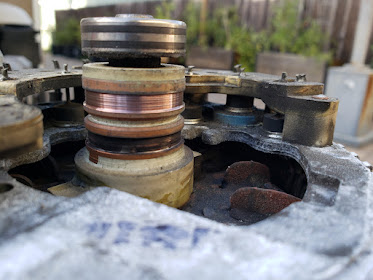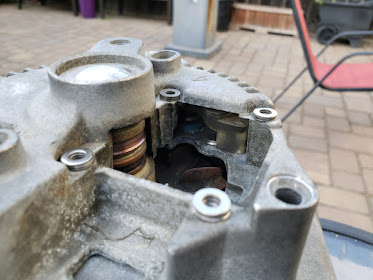I noticed the battery light on my dash flickering a few times over the course of a few days, and eventually it went on slowly. I pulled over to debug. The only chance I had at fixing it was if the exciter fuse went out, but the exciter was getting power, and the big charging fuse was fine too. I was just going to school and back - a little over an hour of driving, so I checked the current draw at 3000 RPM - a little under 20 amps. The battery says 60 amp hours, so I figured I’d make it, and I did!
Back home, I pulled the alternator and checked the resistance between the terminals against what was described in the spec sheet. I discovered that the terminals for the exciter coil were open or very high resistance depending on the rotor position.
I opened it up by removing the obvious screws around the periphery, and then removed the brush and regulator assembly from the cover.. which looked like this:
 The mating rotor looked like this (I’m going to call these “brush journals”):
The mating rotor looked like this (I’m going to call these “brush journals”):

First I thought “easy replacement”, but I checked the local parts stores online, and none of them had just the brushes, and I didn’t want to buy a whole new alternator for a car this old.
I noticed that the journals had a ~2mm deep grove where the brushes ride, and still had material above and below, so I decided to add some washers to offset the brush-regulator assembly axially:

This worked - the battery light went off and the battery voltage gauge showed a normal voltage.